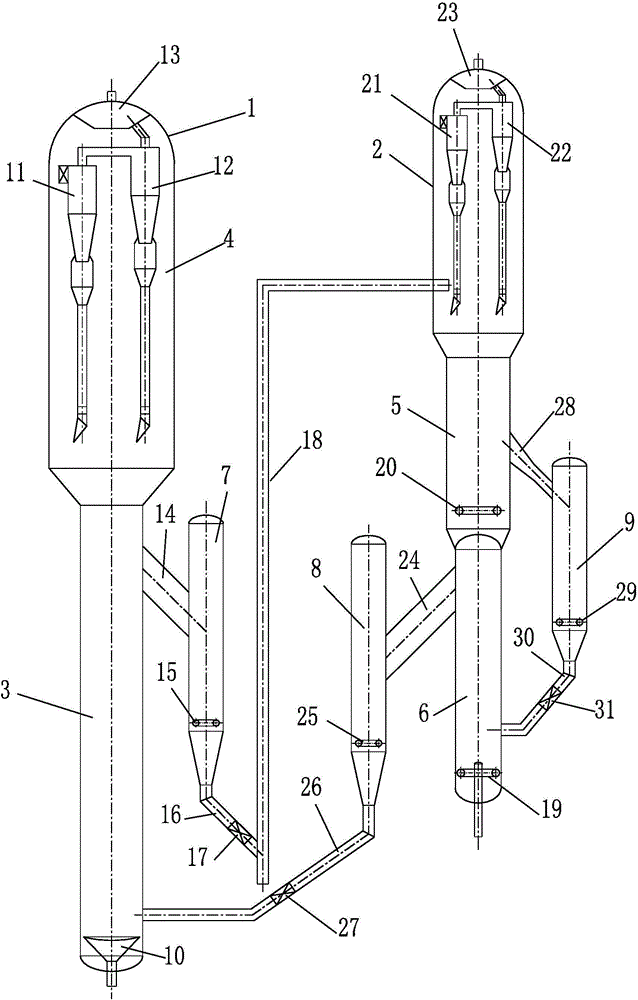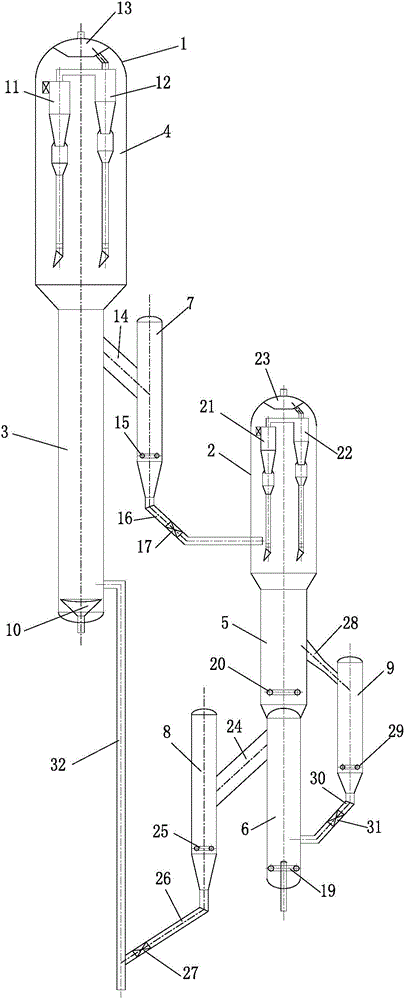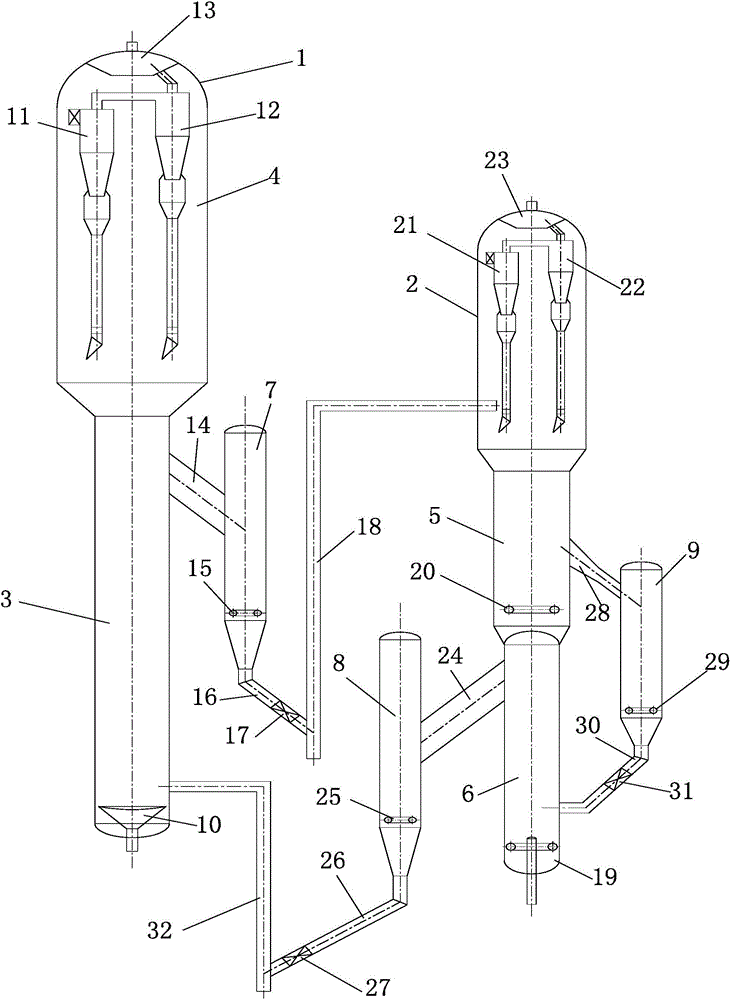Method of producing aromatic hydrocarbon through catalytic conversion of organic oxides
A technology of organic oxides and catalytic conversion, applied in the direction of hydrocarbon production from oxygen-containing organic compounds, organic chemistry, chemical recovery, etc., can solve the problems of catalyst loss, catalyst activity reduction, catalyst hydrothermal deactivation, etc., to reduce catalyst Loss and operating costs, reduced pipeline and equipment wear, reduced hydrothermal deactivation effects
- Summary
- Abstract
- Description
- Claims
- Application Information
AI Technical Summary
Problems solved by technology
Method used
Image
Examples
Embodiment 1
[0077] like figure 1 As shown in the system for producing aromatics by catalytic conversion of organic oxides, the process and operating conditions of the first embodiment of the method for producing aromatics by catalytic conversion of organic oxides of the present invention are as follows:
[0078] According to the method of the present invention, the catalyst circulation between the reactor and the regenerator is set up. The catalyst is a modified ZSM-5 molecular sieve catalyst (synthesized and produced by a research institute of Sinopec, the same below), and the raw material is industrial methanol. The heating temperature is 180°C; the reaction temperature is 490°C, and the pressure in the dilute phase section of the reactor and the top of the first regenerator is 0.2MPa(g). Gas-phase methanol enters the bottom of the dense-phase bed reaction section from the feed distribution plate, fully contacts and reacts with the regenerated catalyst from the second regenerator, and t...
Embodiment 2
[0085] like figure 2 The process and operating conditions of the second embodiment of the method for producing aromatics by catalytic conversion of organic oxides in the system shown in the present invention are as follows:
[0086] According to the method of the present invention, the catalyst circulation between the reactor and the regenerator is set up, the catalyst is a ZSM-5 molecular sieve catalyst, the raw material is industrial methanol, and the feed preheating temperature is 160 ° C; the reaction temperature is 470 ° C, the dilute phase section of the reactor and The top pressure of the first regenerator is 0.15MPa(g). Gas-phase methanol enters the bottom of the dense-phase bed reaction section from the feed distribution plate, fully contacts and reacts with the regenerated catalyst from the second regenerator, and the gas and catalyst move upward along the flow and react in the entire dense-phase bed reaction section , the mass space velocity of methanol is 0.5h -...
Embodiment 3
[0093] like image 3 The process and operating conditions of the third embodiment of the method for producing aromatics by catalytic conversion of organic oxides in the system shown in the present invention are as follows:
[0094] According to the method of the present invention, the catalyst circulation between the reactor and the regenerator is set up, the catalyst is a ZSM-5 molecular sieve catalyst, the raw material is industrial methanol, and the feed preheating temperature is 200 ° C; the reaction temperature is 490 ° C, the dilute phase section of the reactor and The top pressure of the first regenerator is 0.3MPa(g). Gas-phase methanol enters the bottom of the dense-phase bed reaction section from the feed distribution plate, fully contacts and reacts with the regenerated catalyst from the second regenerator, and the gas and catalyst move upward along the flow and react in the entire dense-phase bed reaction section , methanol mass space velocity 2.0h -1 .
[0095]...
PUM
 Login to View More
Login to View More Abstract
Description
Claims
Application Information
 Login to View More
Login to View More - R&D
- Intellectual Property
- Life Sciences
- Materials
- Tech Scout
- Unparalleled Data Quality
- Higher Quality Content
- 60% Fewer Hallucinations
Browse by: Latest US Patents, China's latest patents, Technical Efficacy Thesaurus, Application Domain, Technology Topic, Popular Technical Reports.
© 2025 PatSnap. All rights reserved.Legal|Privacy policy|Modern Slavery Act Transparency Statement|Sitemap|About US| Contact US: help@patsnap.com



